Overview
The infrastructure and design of the housing are evolving with time. Initially, people lived in mud houses, but now people have switched to concrete houses due to advancements in technology. The development in the construction industry made living conditions more convenient and stable (Wu et al., 2019). It has a positive impact on the rapid growth of industries. On the contrary, this development negatively affects the climate by emitting greenhouse gases causing the frequent occurrence of climate-induced disasters (Aslam et al., 2021). Climate change is one of the imminent threats to low-income strata groups who are compelled to live in slums and squatters due to outdated and poor implementation of the National Housing Policy 2001.
Owning to rapid migration in urban areas and cities, the demand for standard and affordable housing has increased drastically. According to the estimation, 300 million new housing units will be required by 2030, and the need for housing units is high in Asia and African Countries (World Bank, 2016). According to the Global Survey, more than 1.2 million people live in substandard houses due to the lack of safe and affordable houses. People are migrating towards the cities for better jobs and improving their standard of living. According to the World Bank’s study, 68% of the population will live in urban areas by 2050. To meet the housing demand, the construction of houses will be increased, affecting the climate as the construction industry emits 40% of Green House Gases (GHG).
Need for the Resilient Development
It is necessary for the countries to take action to meet the goals of the Paris Agreement, i.e., reduce emissions, build resilience and decrease vulnerability to the adverse effects of climate change. Future plans and investments must be organised as per the SDG’s 2030 Agenda. On the other hand, affordable housing with the availability of basic amenities will improve the health and well-being of the citizens living below the poverty line. Moreover, construction of climate-smart housing is essential for meeting the housing demand. It will help protect the environment, increase climate resilience, and foster social cohesion. Therefore, the availability of housing to all citizens will catalyse macroeconomic growth, create jobs and increase the earnings of individuals. By 2050, it was predicted that more than double the number of people would live in the informal settlement, i.e., three billion. Due to poverty and lack of availability of quality housing, more people are compelled to live in substandard settings which are not resilient to bear natural disasters. Moreover, their houses are built from poor materials and are more prone to risk. The increase in temperature due to the depletion of the ozone layer will increase the frequency and intensity of floods and the occurrence of droughts. Nonetheless, with the continuous increase in urbanisation, most people are moving toward the climate–vulnerable cities. It is a dire need to invest in climate-smart affordable housing.
Construction Material Used in Pakistan
The construction industry of Pakistan mainly consists of hollow bricks, clay bricks, and red bricks. The conservation pattern is still lacking as compared to other countries because no appropriate measures have been taken for heating and cooling in summers/winters, leakage and orientation.
Sand as a raw material plays an essential role in the building of houses, and it is usually mixed with the soil to make the foundation of the house.
The mixture of water, sand and soil has been used as a concrete material.
The housing structure is classified based on the material used, and these are classified into three main categories:
– Pakka House built from concrete material, i.e., brick, stone, cement, or timber.
– Kuchha House built from nonstandard material, i.e., mud, bamboo, reeds or thatch.
– Semi Pakka house is a mixture of pakka and kuchha house.
Housing Sector of Pakistan
The housing demand in Pakistan is increasing with time, and currently, Pakistan is facing a housing deficit of 10 million units. However, the total housing shortage percentage of the population is 24% which is significantly higher than the neighbouring countries with similar demographics, i.e., India at 12% and Bangladesh at 18% (Qureshi et al., 2022).
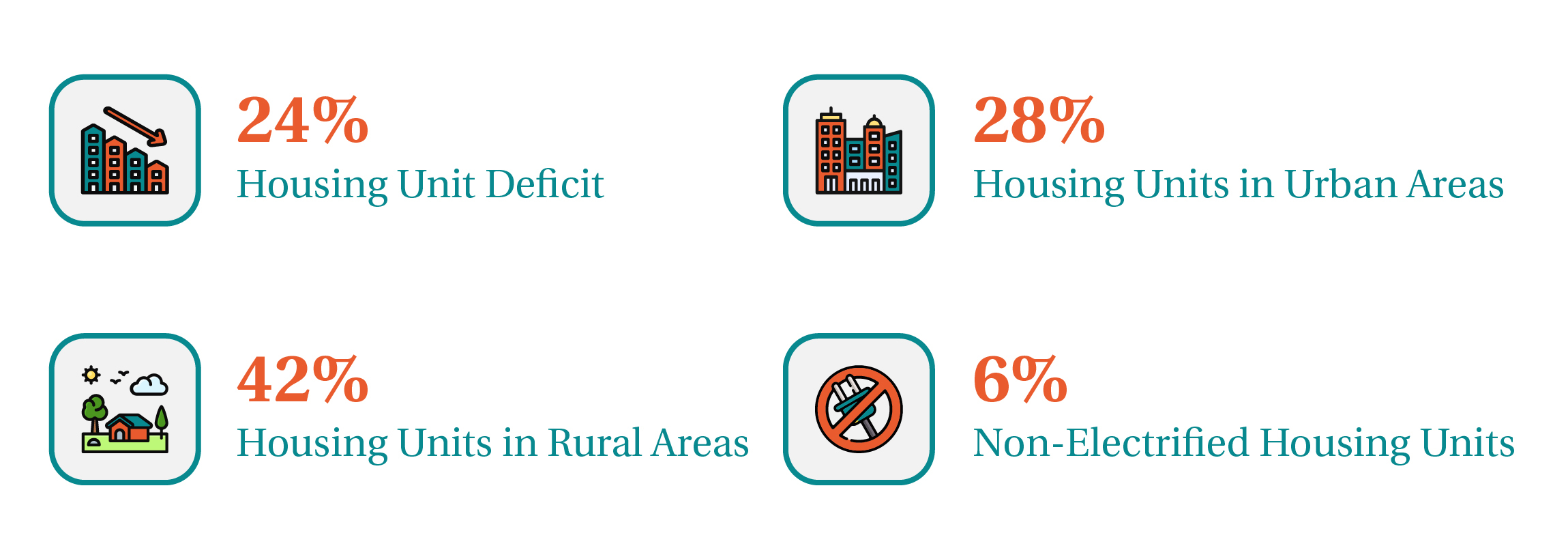
Cost of Making the House
In 1991, the cost to build the semi-pukka house was equivalent to 8 times the daily wage of an unskilled worker.
In 2008, the cost was equivalent to 60 times the daily wage of an unskilled worker.
In 2022, 60% of the population will be unable to have affordable shelter due to an increase in housing inflation.
Half of the urban population of Pakistan lives in slums where they don’t have access to basic amenities.
Challenges
As per the Pakistan Bureau of Statistics, the average cost of urban housing is 12 million, and conversely, the average monthly income is PKR 81,800, and it will take 30 years to buy it.
Housing Building Finance Company (HBFC) Limited is a government entity that only provides loans to make affordable houses to individuals whose monthly income is around PKR 70,000 – 100,000 per month (Qureshi et al., 2022).
Urban structure in Pakistan is changing, and Karachi is considered one of the highly populated cities with 20 million people. People living in the cities have to face power outages, water shortages, heat waves, urban flooding, clogged drains and poor solid waste management techniques (Abdul & Yu, 2020).
Pakistan needs climate-smart housing because of the frequent occurrence of climate change events, uncontrolled urbanisation, housing shortages, decreasing social capital, inadequate spatial planning, and ineffective building works by the government (Satterthwaite et al., 2020).
In Pakistan, horizontal urban growth is the main reason for housing shortages. Over 20 million people do not have a roof over their heads, and 35% of the population live below the extreme poverty line.
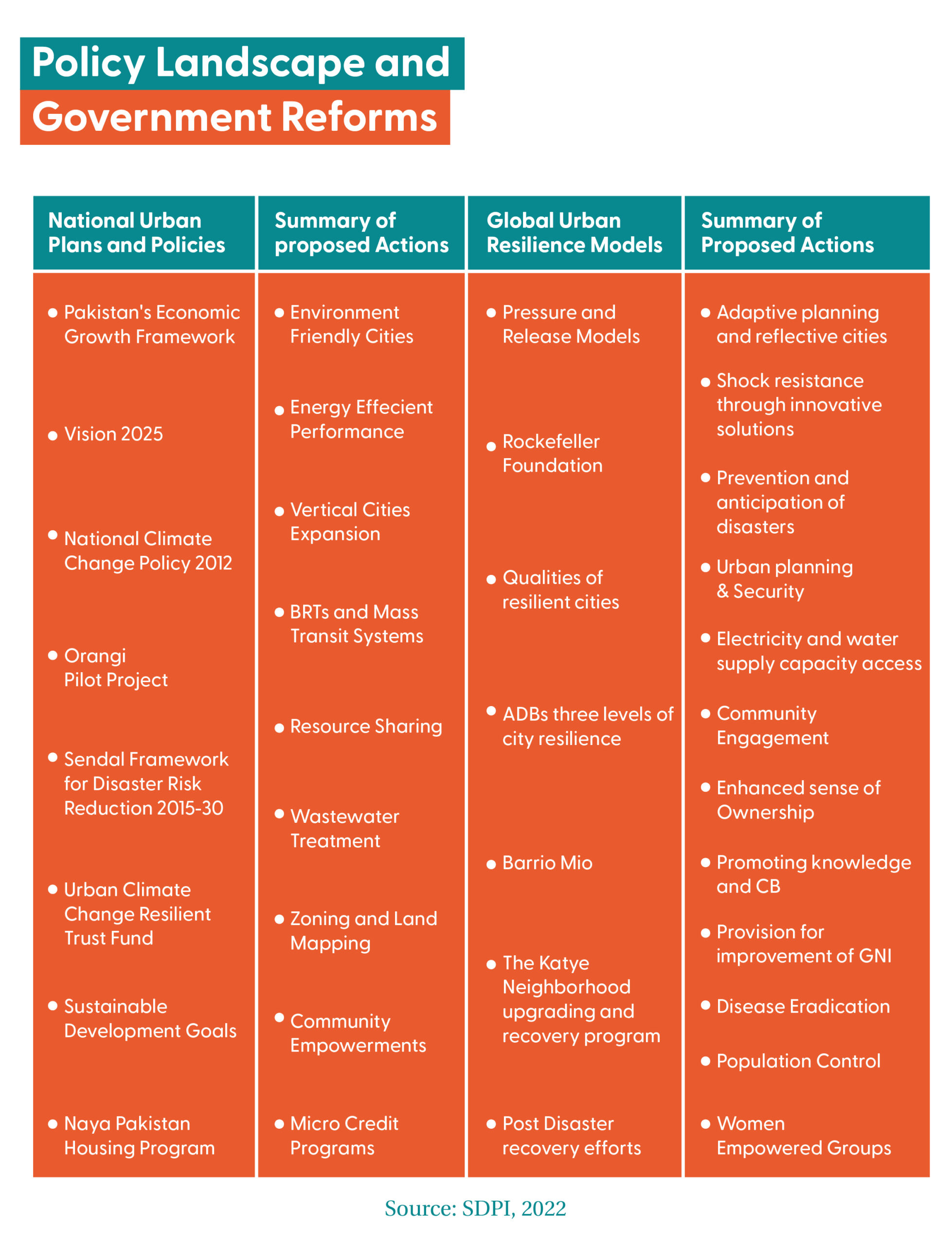

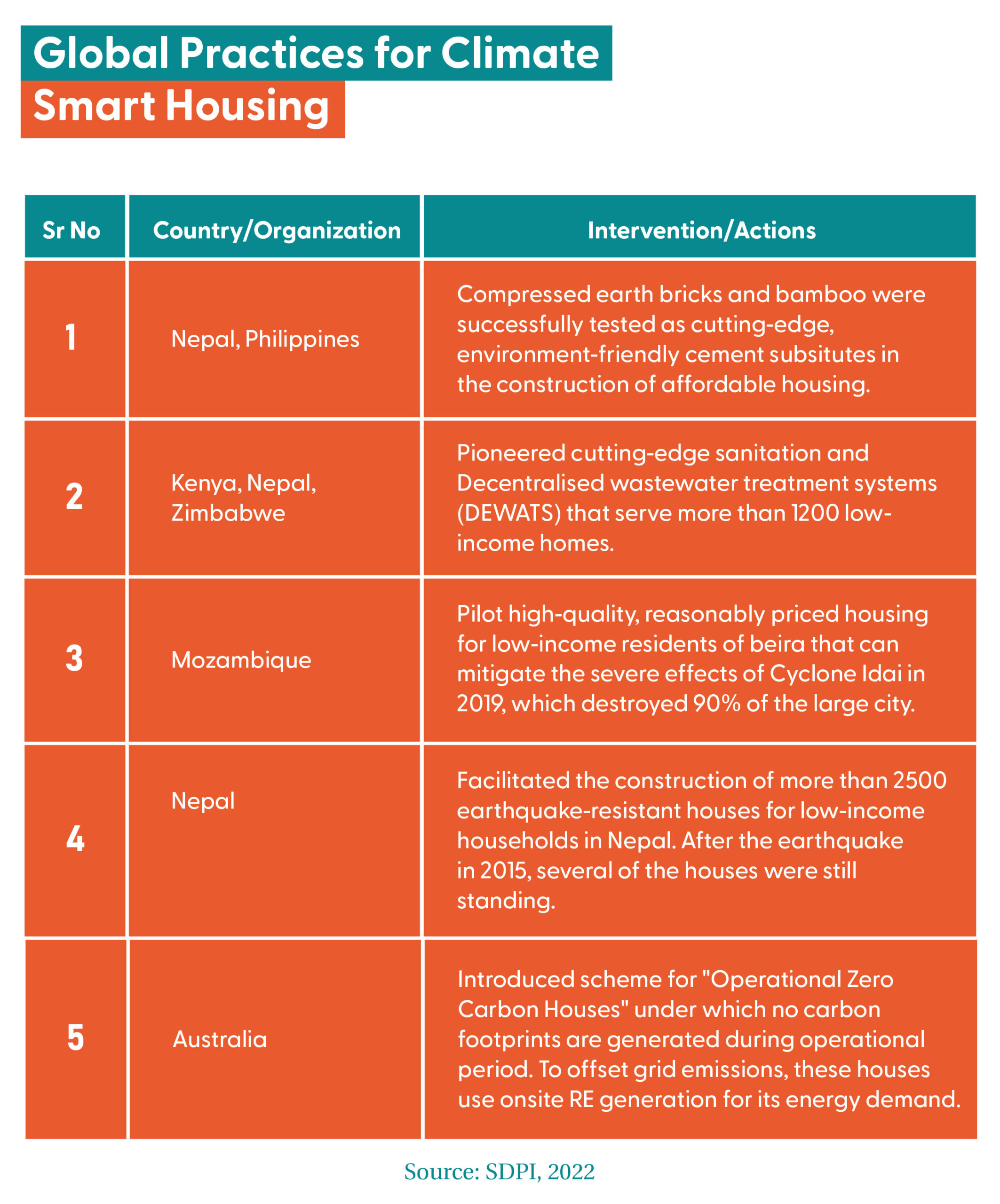 Policy Recommendation
Policy Recommendation
To build climate-smart infrastructure, certain measures should be taken (Qureshi et al., 2022):
Pre-identification and site selection will help reduce exposure to climate disasters such as storms, floods and landslides.
Use the material for the construction of buildings which will be climate resilient.
The federal government, provincial authorities and housing authorities should work together to build climate-smart housing.
Government should come up with a ‘National Resilient Development Programme’ which will help in developing policies and regulations in order to adapt existing and new intelligent policies.
Countries must develop Environment, Social and Governance Strategies (ESGs) for sustainable development.
Review building codes and regulations as per the climate-resilient building structure.
Conduct awareness training and a capacity-building program for key project stakeholders on climate- and disaster-resilient design and the building code.
Government should encourage green investment.
References
Abdul, L., & Yu, T. (2020). Resilient urbanization: A systematic review on urban discourse in Pakistan. Urban Science, Page. 76.
Aslam et al. (2021). Green recovery from COVID-19: Outlook for Pakistan’s Energy and Power Sector.
Pabani, A. (2021). Can the Naya Pakistan Housing Program address the crisis of affordable housing? Macro Pakistan. Retrieved from https://macropakistani.com/naya-pakistan-housing-program/
Qureshi et al. (2022). Climate Smart Housing in Pakistan. SDPI.
Satterthwaite et al. (20202). Building resilience to climate change in informal settlements. One Earth, Page 143- 156. World Bank. (2016). Housing For All by 2030. Retrieved from https://www.worldbank.org/en/news/info[1]graphic/2016/05/13/housing-for-all-by-2030.
Wu et al. (2019). Factors influencing the application of prefabricated construction in China: From perspectives of technology promotion and cleaner production. Journal of Cleaner Production, 753-762.
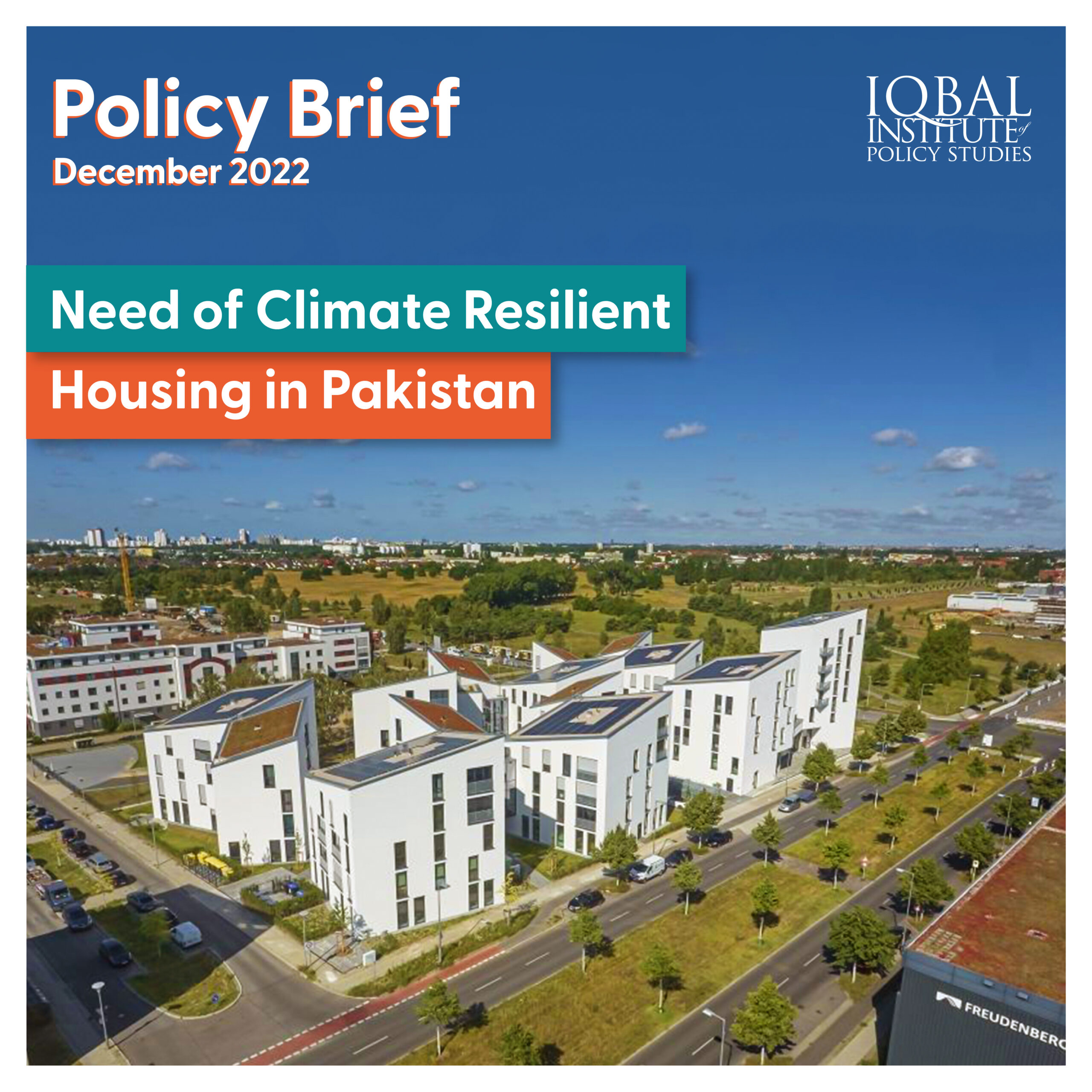

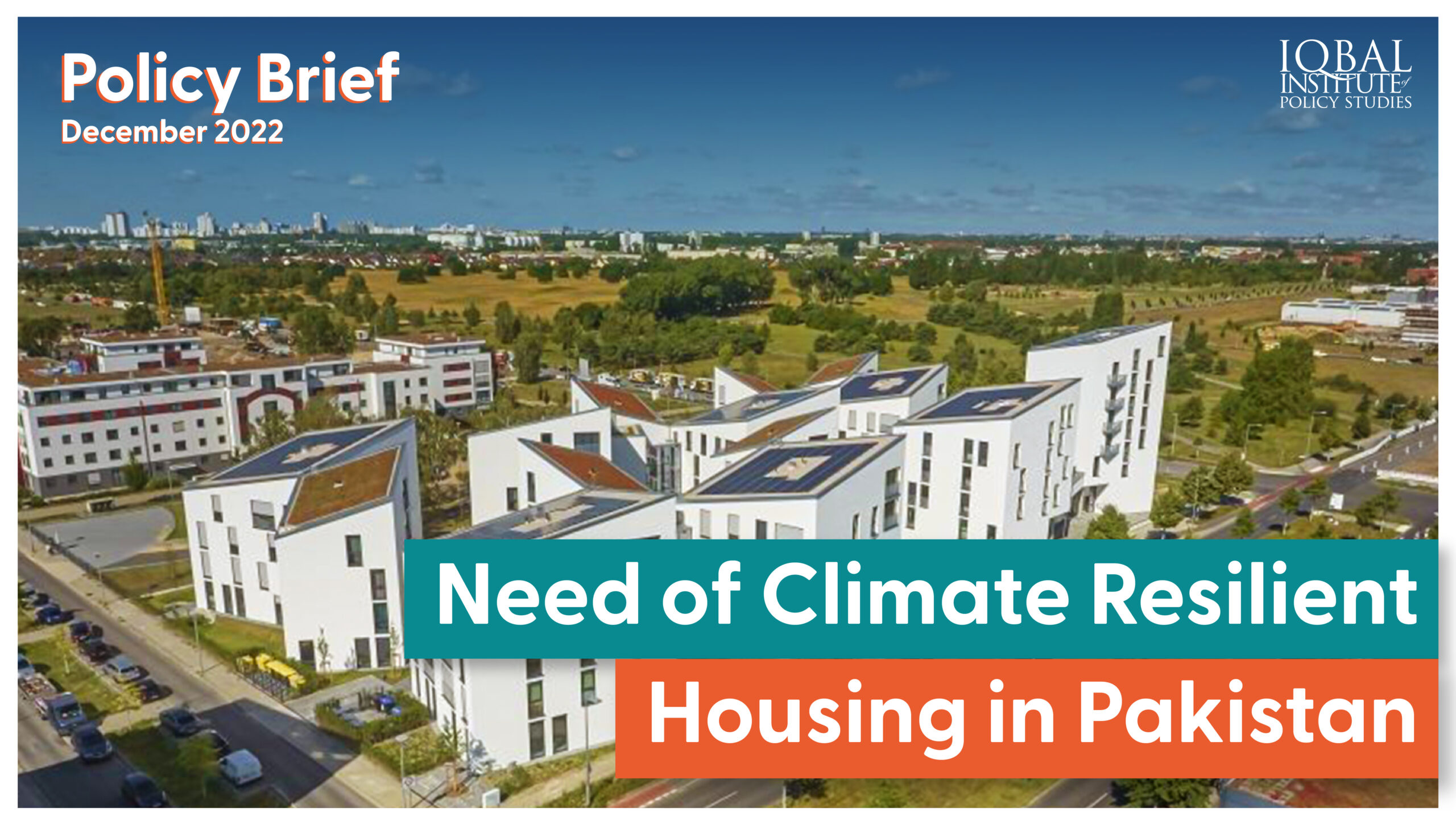
Leave a Reply